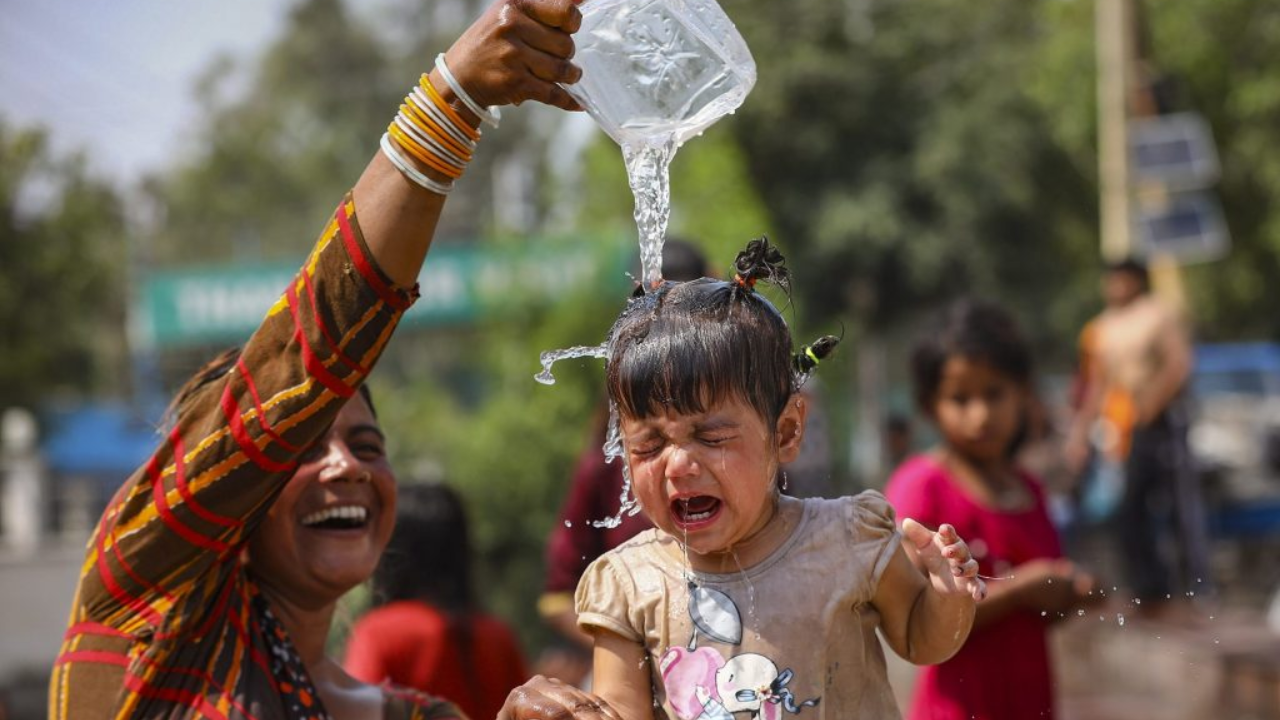TOI News Desk
The India Meteorological Department (IMD) has issued a warning for northwest and east India, predicting a further rise in temperatures by two to three degrees over the next five days.
- Severe heatwave conditions were reported in parts of Gangetic West Bengal, while areas in Uttar Pradesh, south Bihar, Delhi, and Jharkhand also faced intense heat.
- Maximum temperatures ranged between 42°C to 45°C in several regions, including Rajasthan, Punjab, and Delhi, as well as parts of Haryana, Uttar Pradesh, Bihar, Jharkhand, Gangetic West Bengal, and east Madhya Pradesh.
- These temperatures were notably 3°C to 5°C above normal in some areas.
- In Delhi, Narela recorded the highest
temperature at 46.6°C, closely followed by Najafgarh at 46.3°C. - Prayagraj in Uttar Pradesh was the hottest place in the country, reaching 46.3°C.
- In response to the escalating heat, the Bihar education department has ordered the closure of all government-run schools until June 15.
- The IMD has forecasted that the fresh heatwave spell will likely impact Jammu and Kashmir, Himachal Pradesh, Uttarakhand, Punjab, Haryana, Delhi, Rajasthan, Madhya Pradesh, Jharkhand, Odisha, and Gangetic West Bengal.
- May witnessed several locations across the country, including the hills of Assam, Uttarakhand, Himachal Pradesh, and Arunachal Pradesh, recording all-time high temperatures.
- Rajasthan experienced temperatures breaching 50°C, with Delhi and Haryana nearing this mark.
Heatwave preparedness
This year, India has already endured multiple intense and prolonged heatwaves in April and May, pushing human endurance and the country’s disaster preparedness to their limits. Several states, including Uttar Pradesh, Bihar, and Odisha, reported fatalities due to the extreme heat.
Experts attribute the severe heat to the El Nino phenomenon—a warming of the ocean surface in the central and eastern tropical Pacific Ocean—and the rapidly increasing concentration of greenhouse gases in the atmosphere. Rapid urbanization has exacerbated warming in cities, disproportionately affecting outdoor workers and low-income households.
Climate change
Climate change has significantly increased the frequency of such heatwaves, making them about 45 times more likely, according to the ‘World Weather Attribution’ group of leading climate scientists.
The central water commission reported that water storage in 150 major reservoirs in India has dropped to just 22 per cent of their live storage capacity, exacerbating water shortages and impacting hydropower generation.
Impact on power demand and water availability
The intense heat has driven India’s power demand to a record 246 gigawatts, as air conditioners and coolers in homes and offices run at full capacity.
From March to May, India recorded nearly 25,000 suspected heat stroke cases and 56 heat-related deaths, according to health ministry data. Of these, 46 deaths occurred in May alone, with 19,189 suspected heat stroke cases reported that month.
The data, however, does not include figures from Uttar Pradesh, Bihar, and Delhi, suggesting the actual toll may be higher.
Severe heatwaves have plagued India for three consecutive years, significantly impacting health, water availability, agriculture, power generation, and other economic sectors.
A World Bank report predicts that by 2030, India could account for 34 million of the projected 80 million global job losses due to heat stress-associated productivity decline. Additionally, studies indicate that India faces food losses worth USD 13 billion annually, with only four percent of fresh produce covered by cold chain facilities.
(With inputs from agencies)



